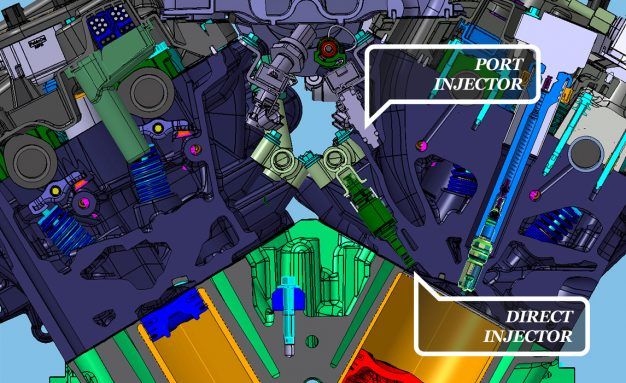

Half of the U.S. new-car and truck fleet now is equipped with gasoline direct injection (also known as GDI)—which means the fuel is sprayed straight into the combustion chamber. This begs the question: What’s the next engine innovation about to leave the lab?
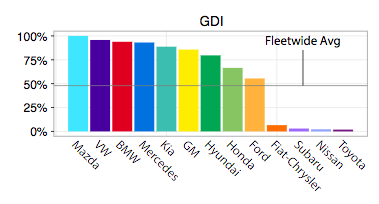
The answer is bringing fuel to the fire by two separate paths, and a few makers already are fitting their engines with both port and direct injection. Toyota introduced this technology, which it calls D-4S injection, on a V-6 more than a decade ago and now uses port and direct injection on its 2.0-liter flat-four (which is built by Subaru), 3.5-liter V-6, and 5.0-liter V-8. Audi has it on its 3.0-liter V-6 and 5.2-liter V-10 engines.
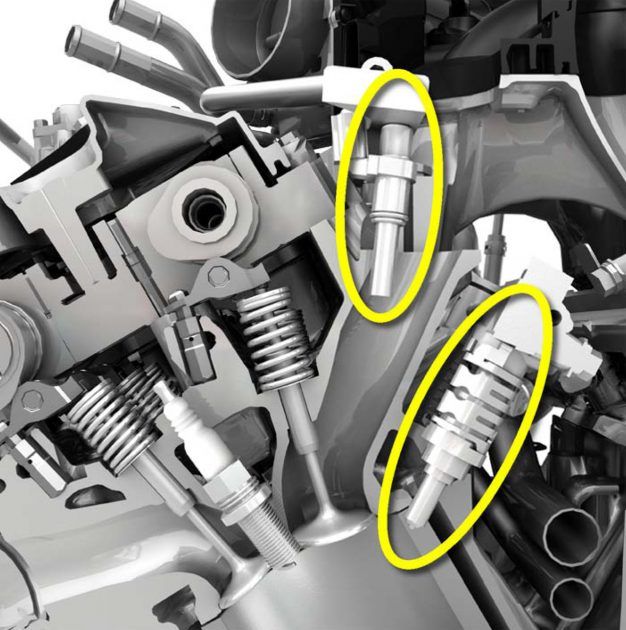
Ford currently is the dominant player with what it calls dual-fuel, high-pressure direct injection (DI) and lower-pressure port injection (PI). Applications include turbocharged and naturally aspirated V-6 and V-8 gasoline engines—four in all—ranging in size from 2.7 to 5.0 liters. The 2017 F-150 Raptor flying pickup and the GT supercar both are powered by new 3.5-liter EcoBoost V-6s so equipped. Ground-bound F-150s also rely heavily on this technology with a dual-fueled base 3.3-liter V-6 and optional EcoBoost 2.7- and 3.5-liter V-6s. Ford’s most recently announced application thus far is the new 5.0-liter V-8 that will power the 2018 Mustang GT.
The Basics
Before delving into the fine points of teaming PI with DI, a short primer is in order. Contrary to Hollywood’s depictions of cars plummeting off cliffs, there is no such thing as spontaneous ignition. Because liquid gasoline won’t burn, preparing fuel drawn from the tank to combust inside the engine is a two-step process.
Step one is atomizing the liquid to fine droplets, achieved by forcing gasoline pressurized by a pump through tiny injector orifices. A study by Hitachi engineers revealed that fuel pressurized to 1000 psi and injected through orifices ranging from 0.006 to 0.011 inch in diameter yielded a 135-mph mist of droplets only 0.000003 inch in diameter. That’s fine.
Vaporization follows atomization. Here, the fine fuel droplets go through a liquid-to-gas phase change, becoming a vapor that can be mixed with air and ignited by the spark plug.
Because heat is absorbed during this phase change, there’s a cooling effect, which can be used to improve the engine’s operating efficiency. With PI, the air flowing through the intake manifold is cooled before it reaches the combustion chamber. With DI, the cooling benefit occurs within the chamber itself.
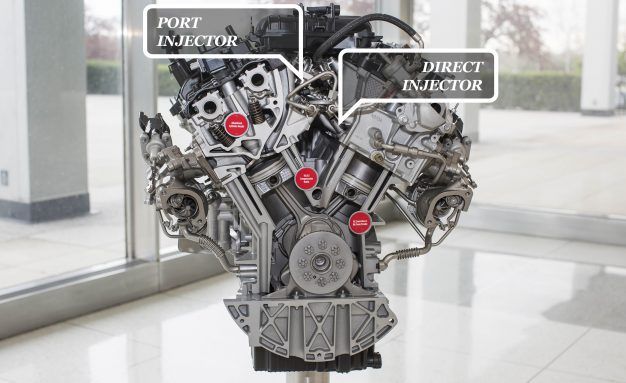
Each strategy has pluses and minuses. PI is handy for naturally aspirated engines because cooling the incoming air increases its density and power-producing potential. It’s significantly easier to locate injectors in the intake ports, well away from the valves and spark plugs. This upstream location provides ample time for full vaporization to occur. One downside is that fuel droplets sometimes are deposited on the intake port walls, upsetting the intended fuel-air ratio.
With DI, the chance of detonation—premature ignition of the fuel and air mixture—is diminished because the phase-change cooling effect takes place during the compression stroke just before ignition. Lowering the combustion chamber’s surface temperatures enables a higher compression ratio and improved efficiency whether the engine is naturally aspirated or boosted. Ford raised peak torque by 30 lb-ft in its new 3.5-liter V-6 by combining the new dual-injection strategy with higher boost pressure.
There are downsides to DI. A DI system is more expensive because the pressure required to squirt fuel into the combustion chamber is 50 to 100 times higher than with PI, and the higher-pressure pump imposes parasitic losses. Direct injectors tend to be noisy. Carbon deposits—both on the backsides of the intake valves and on tailpipes—are service issues for some DI users. Because there’s less time for vaporization to occur, some fuel escapes the combustion chamber and the catalytic converter as particulate matter or soot. These carbon particles are similar to but smaller in size than those spit out by diesel engines.
The Combination
The ultimate strategy is combining both PI and DI benefits, using each to diminish the other’s negatives. Toyota, for example, fires both injectors during low to medium load and rpm conditions—in other words, during normal driving. This raises the density of the incoming charge without boosting and flushes carbon deposits off the intake valves. During high load and rpm circumstances, when maximum combustion chamber cooling is needed because detonation is more likely, DI handles all the fuel delivery.
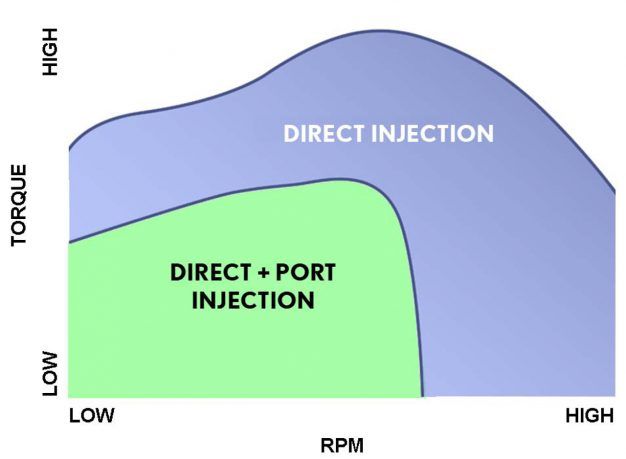
Each maker uses a different strategy regarding when to use port, direct, or both injectors. One of Toyota’s torque versus rpm versus injector use maps is shown here.
Peter Dowding, Ford’s chief engineer of powertrain gasoline systems, revealed a different strategy. Ford uses PI alone at idle and at low rpm for smooth, quiet, and efficient engine operation. As rpm and load increase, fuel delivery becomes a programmed blend of PI and DI. In contrast to Toyota’s methodology, Ford’s PI is always operating, responsible for at least 5 to 10 percent of the fuel delivery.
Dowding and his Ford engineering colleague Stephen Russ stress that carbon deposits on tailpipes and intake valves have never been an issue in their DI engines. Dowding adds: “Now that electric motors are being assigned increasing propulsion roles, our task is to improve engine efficiency whenever we can. Ford’s dual-fuel technology has already proven to be a valuable, cost-effective strategy in this effort.”
Designing and developing modern engines is a juggling act that attempts to balance power, emissions, mileage, durability, drivability, and other concerns. The dual-fuel strategy gives engineers an additional key to turn as they strive to unlock more energy from each drop of gas. As lessons are learned and component costs fall, expect more makers to adopt this approach to fanning their fires.